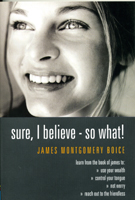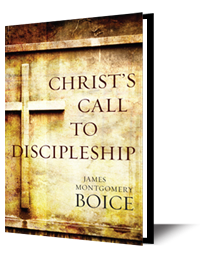Thursday: The Lord’s Priests: Exodus 25:1-31:11
Sermon: The Ceremonial Law
Scripture: Exodus 25:1-31:11
In this week’s lessons, we look at the tabernacle and its furnishings, as well as the instructions about the priests and their service, and see how these details point to the coming of the Lord Jesus Christ.
Theme: The Lord’s Priests
In Exodus 28, the description of the furniture breaks off, and we have a description of the garments that are to be worn by the priests of Israel, followed by an account of their consecration. Now that seems misplaced, doesn’t it? We already talked about one thing that seemed out of order, when we looked at the ark. However, we saw why the ark was treated first. Here, we haven’t heard about the altar of incense yet, or the basin that was used for purification. Why doesn’t the story go on and finish up with the furniture and then talk about the priests and their garments?
There’s a perfectly good reason. We’ve just talked about the altar of burnt offerings, and the chief thing that the priest had to do was make the offerings. So you see, at this point there’s a great emphasis upon this. Moses doesn’t want us to think that all he’s doing is reeling off the various items of furniture and other things that were found in the courtyard. No, he’s saying, “Look, this is important; stop here and pay attention to it. This is what the priests did.”
The priests, especially the high priest, had a number of objects that they wore, and we need to look at them briefly. First was the ephod, described in Exodus 28:6-14. It was a two-piece outer vest that was joined over the shoulders by gold clasps, on which there were two onyx stones, one on each shoulder, and the names of the tribes were inscribed on the stones. As the high priest interceded for the people he bore them up, or carried them, before the Lord.
The second thing is the breastpiece. It was not armor, as we tend to think. It was actually a folded pouch of cloth that was attached to the ephod, and on it there were twelve stones engraved with the names of Israel’s tribes. So you have the two onyx stones on the shoulders, six names on one stone and six names on the other. Then on the breastpiece you have twelve stones, one of those representing each tribe, and the names are inscribed on those stones. That is a way of saying that the high priest made a double representation for the people. And not only did he bear them up in his prayers before the Lord, but they were also close to his heart. We see this idea in Malachi 3:17, where those who fear the Lord are described as the treasured possession of God. We are close to the heart of God. Jesus holds us close to His heart. And when we are intercede for other people, we do it in both ways. We bear people up before the Lord in our prayers, and we do this because they are close to our heart. We care for them, and so we pray in a caring way.
The third thing is the Urim and Thummim. Nobody knows exactly what they were or how they were used, because there are very few references to them in the Old Testament. They were contained within the pouch, and they seem to have been used in some way to discern the will of God. Now some people think that means they were a little bit like lots or dice, such that the priest took them out and threw them, and depending upon how they landed he got his signal that way. Some think they were supernatural, and that they would glow—one of them if the answer was yes, another one when the answer was no. We don’t know how they were used, but we do know that the priest used them to discern the Lord’s will.
The fourth item is the robe, described in verses 31-35. The most interesting feature of this is that it had bells attached to the hem. There’s nothing else like it in the Old Testament. The bells could be heard as the priest performed his duties, especially as he left to go into the Most Holy Place, and as he returned.
One of our great hymns refers to this feature when it’s looking forward to the return of Jesus Christ. If you have ever sung this hymn, you may not have thought of this. Jesus is returning, and the lines read as follows:
Coming! in the opening east
Herald brightness slowly swells;
Coming! O my glorious Priest,
Hear we not thy golden bells?
You see that this hymn is using the imagery of the bells, the robe, and Aaron the great high priest to describe the work of Jesus Christ. Jesus has gone ahead of us into the Most Holy Place, bearing the sacrifice of His blood to make full atonement for our sins and to intercede for us before God. And when He comes to take us to Himself, once again we hear His bells because it means that the work of atonement and intercession is completed.
Fifth is the turban and its gold plate, which bears the engraved words, “Holy to the Lord” (see verses 36-38). This description of God expresses the very essence of Israel’s worship because God is holy, and therefore those who approach him must be holy too. In Psalm 24 David is asking the question, “Who may ascend the hill of the LORD?” The answer is, “He who has clean hands and a pure heart.” As Hebrews 12:14 also says, “without holiness no one will see the Lord.”
None of us is holy in himself or herself, of course. That’s why we need atonement, and having had the atonement made for us by Jesus Christ we are cleansed. There’s a wonderful picture of that in Zechariah 3. A man named Joshua, the high priest at the time (not the Joshua who was the second-in-command to Moses), stood in the temple going about his duties, but while he was doing that Satan was there to accuse him. The high priest was supposed to minister, but he had dirty robes and a dirty turban. Satan was accusing him for being a sinful man. Indeed he was, as we all are. But God commands that his filthy garments be removed and that he be given new, rich garments, and that a clean turban be placed upon his head. In other words, Joshua was made holy in order to serve a holy God.
Chapter 29 deals with the consecration of the priests in great detail. There is ritual washing, anointing with oil, sacrifices, and the eating of a sacrificial meal. It took seven days for the priests to be properly prepared for their service.
Study Questions:
- Why does Moses now talk about the priests before continuing with other pieces of furniture?
- How were the ephod and breastpiece similar, and why?
- What was the purpose of the Urim and Thummim?
Application: Do you take time to pray regularly for others in a thoughtful and caring way?
Key Point: Jesus has gone ahead of us into the Most Holy Place, bearing the sacrifice of His blood to make full atonement for our sins and to intercede for us before God.
For Further Study: Download and listen for free to Philip Ryken’s message, “The Tabernacle of God.” (Discount will be applied at checkout.)
Think and Act Biblically from James Boice is a devotional of the Alliance of Confessing Evangelicals. It is supported only by its readers and gracious Christians like you. Please prayerfully consider supporting Think and Act Biblically and the mission of the Alliance.


















